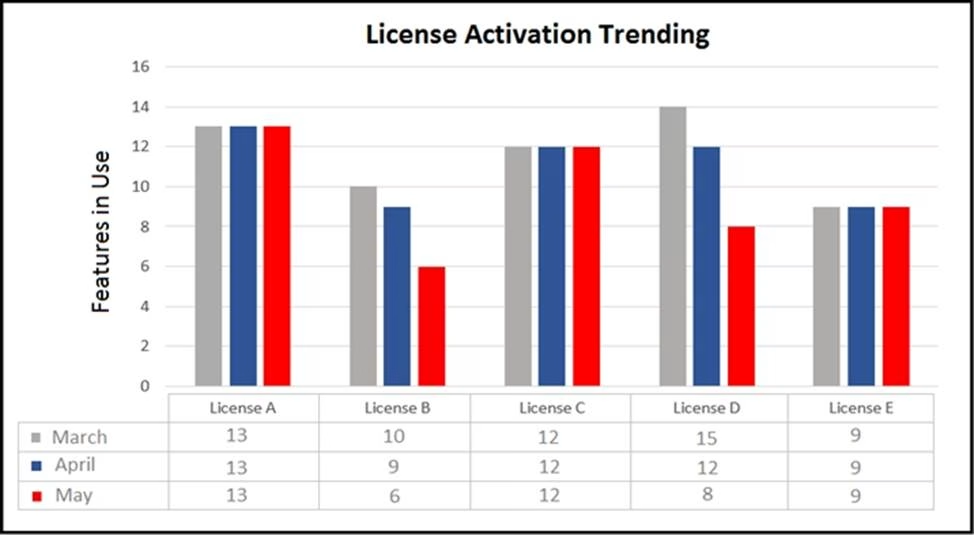Cisco 820-605 Cisco Customer Success Manager Online Training
Cisco 820-605 Online Training
The questions for 820-605 were last updated at Dec 13,2025.
- Exam Code: 820-605
- Exam Name: Cisco Customer Success Manager
- Certification Provider: Cisco
- Latest update: Dec 13,2025
Which action should be taken when new company leadership is forcing a competitor’s solution?
- A . Recheck the value realized by the current solution.
- B . Demonstrate how the current solution is a lower-cost solution than competitors.
- C . Hold an executive briefing to evaluate risks of the proposed solution.
- D . Tell the new leadership about the long-standing relationship between two companies.
Customer A has 120.000 employees and a meeting booking system that is 20 years old. It provides a personalized service that arranges all aspects of video conference meeting. This service includes 21 staff people globally. Customer A has invested in a video conferencing solution. Their desired outcome is to create a cost-savings, self-serve approach to achieve business innovation through face-to-face communications.
Which adoption barrier will the customer encounter?
- A . technical barrier
- B . cultural barrier
- C . product barrier
- D . cost barrier
What are two drivers for Customer Success? (Chooser two)
- A . The customer trusts that Cisco support will solve any issues.
- B . The customer receives training for new products and services.
- C . The customer recognizes the value of initial use case implementations.
- D . The customer gives feedback about the purchased product.
- E . The mature and fully deployed solution is running in production.
How can Customer Success Plan tracking drive additional license purchases?
- A . The Success Plan tracks the mean time to failure of the solution.
- B . The Success Plan tracks the number of threats blocked and benchmarks it against the previous year.
- C . The Success Plan tracks gains in user productivity and communicates this back to the business.
- D . The Success Plan tracks the number of technical support cases opened.
Refer to the exhibit.

Which initial action does a Customer Success Manager take?
- A . Run analysis on all the license types used by the customer on all platforms
- B . Share the report with the customer point of contact for license types B and D and determine causes
- C . Provide trending information on license types B and D and share with all stakeholders
- D . Inform the Sales Account Manager to position a new version of licenses types B and D with additional features
Which two actions are in adoption campaign? (Choose two.)
- A . messaging to users on best practice approaches to their solution
- B . messaging to stakeholders on new product releases
- C . messaging to stakeholders on the new features of their solution
- D . survey sent to all end users
- E . renewal reminder to stakeholders
Which action should be taken to identify and remove barriers when a customer moves from the Implement to the Use stage in the lifecycle?
- A . Provide break-fix support for technical problems experienced or observed by the customer.
- B . Provide training content to address current and existing barriers.
- C . Provide a detailed cost structure for the management team.
- D . Provide direct and in-depth technical expertise upon customer request.
Which type of analytics has telemetry that demonstrates the customer’s use of the software and actions to date?
- A . diagnostic
- B . descriptive
- C . prescriptive
- D . predictive
A customer’s call center unexpectedly moved from in-person to remote operations and discovered that agents could no longer record their calls. The customer escalates this problem to their Customer Success Manager and requests a resolution. The Customer Success Manager recognizes that the customer is using collaboration products with outdated software.
What is the first step of the mitigation plan?
- A . Evaluate the availability of resources to work on the problem.
- B . Engage a specialist to identity a technical solution or workaround.
- C . Conduct an assessment of the business impact of the problem.
- D . Establish a timeline of when a solution must be in place.
How are operating expenses (OpEx) different from capital expenses (CapEx)?
- A . OpEx are investments a company pays for up-front, while CapEx are the on-going costs to run a business.
- B . OpEx includes software licenses with contracts that have user rights in perpetuity, while CapEx includes software services that are easily reconfigured.
- C . OpEx is expenses for the day-to-day operation of a business, while CapEx is investments in assets.
- D . OpEx has depreciation, while there is no deprecation with CapEx.
Latest 820-605 Dumps Valid Version with 50 Q&As
Latest And Valid Q&A | Instant Download | Once Fail, Full Refund

